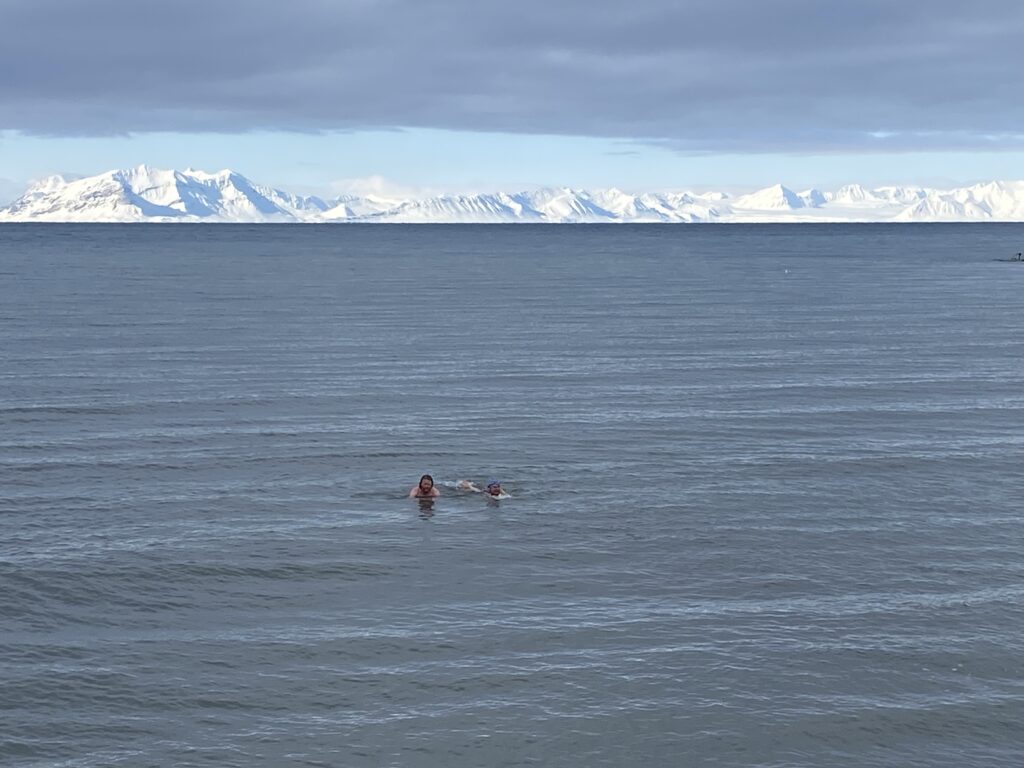On the south side of Isfjorden, between Longyearbyen and Barentsburg, lies a large and wide bay called Coles Bay (Colesbukta).
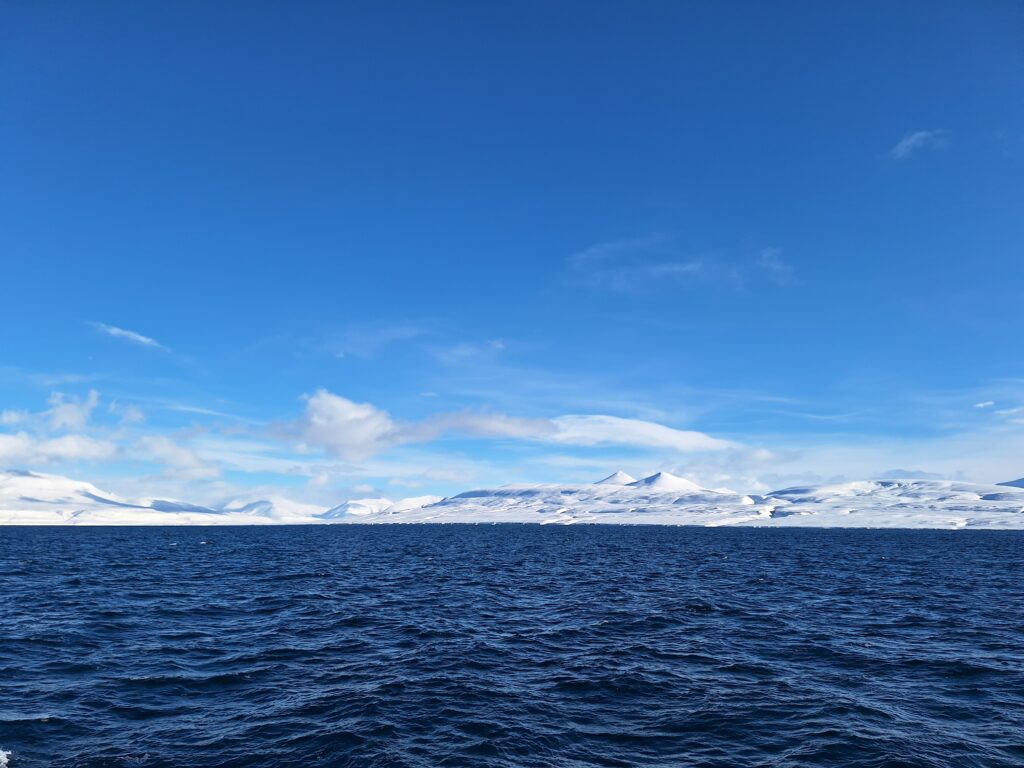
The bay was named as early as 1630, when an (English?) explorer reported that this was a good place for hunting reindeer. Coles Bay is named after Cole Park in Wiltshire, England. Later, when coal mining started up in Isfjorden, the name was misinterpreted as Coal Bay.

The Russian coal mining town of Grumant, located between Coles Bay and Longyearbyen, was bombed during World War II. Due to difficult port conditions, it was decided to build a new coal shipping port in Coles Bay when reconstruction began after the war.
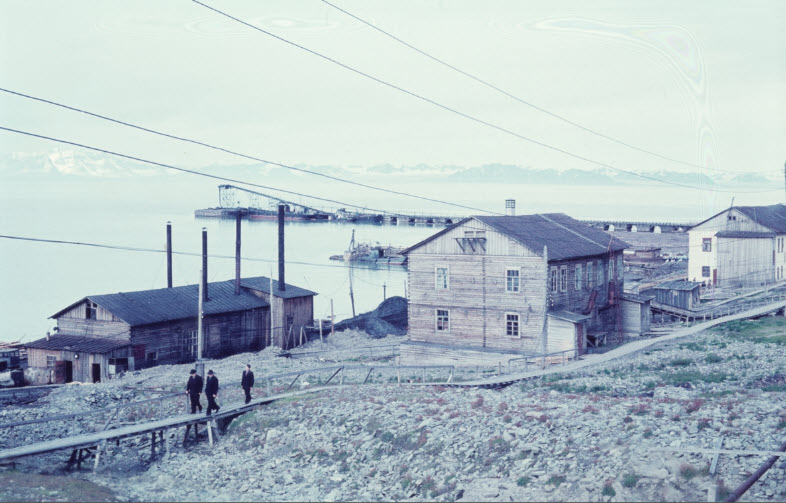
A 40 cm wide (narrow gauge) and 10 km long railway was built between Grumant and Coles Bay for coal transportation. The railway was partly tunnelled and otherwise built-in. The wharves are made of timber, and parts of them are still standing, some 60 years later.

We wanted to go swimming in Coles Bay! Luckily, we were assisted by Jorunn and Nina, who helped us as photographers and polar bear guards.
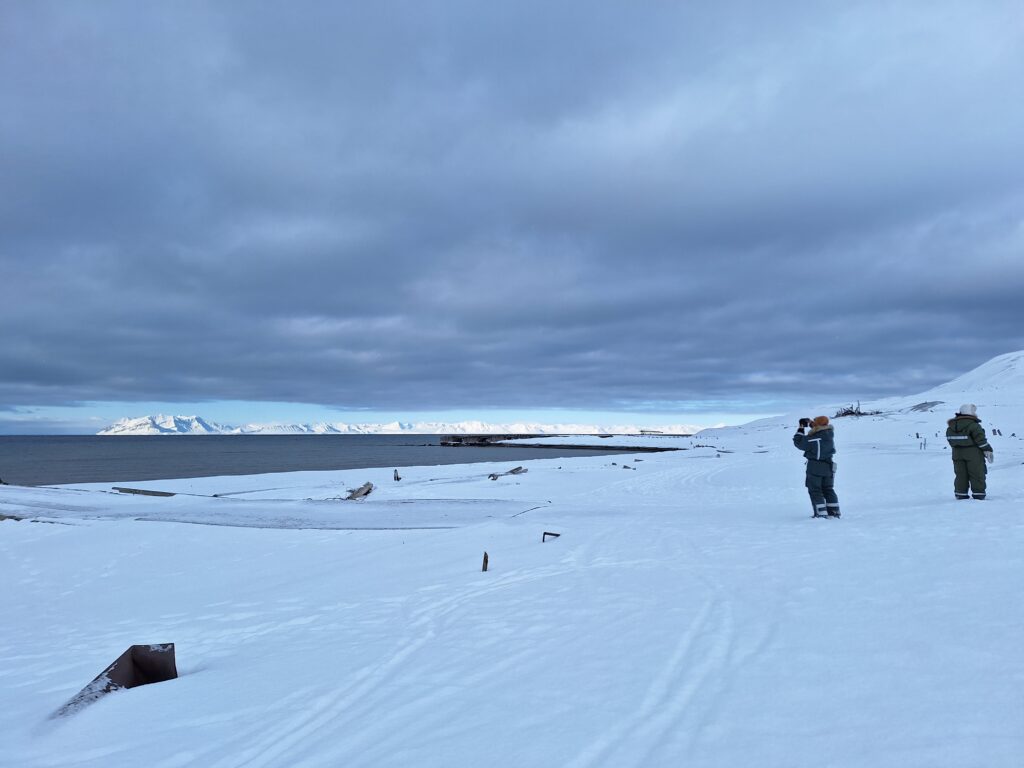
Then we just had to get started, we even had a wardrobe.
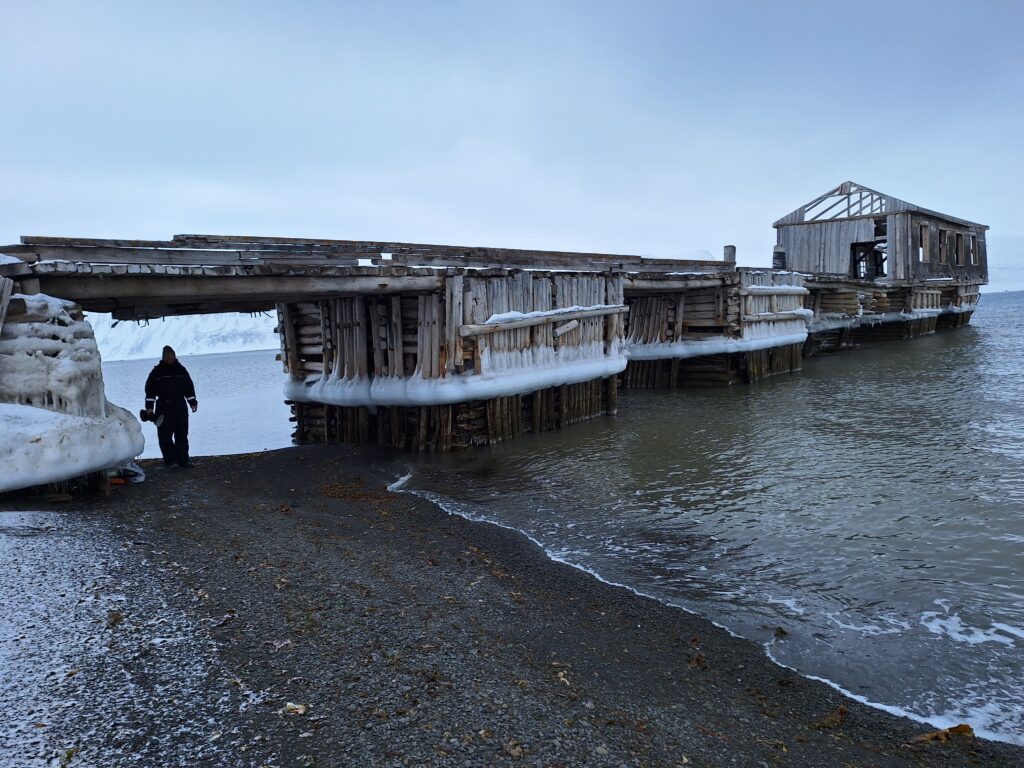
It was a really nice swim. Quays like this are not built in shallow waters, and we didn’t have to go far before we could swim. There were no hints of slush this time, water temperature about 0 degrees Celsius, and minus 15 degrees in the air. The beach, like all the Svalbard beaches we have tested so far, consisted of fine-grained gravel (or possibly coarse-grained sand), which means you don’t have to worry about sand getting inside all your clothes. Three black guillemots swam around right next to us, and a reindeer grazed nearby. Add to that the splendid view, and you have our recommendation: A swim in Coles Bay can be fabulous!
NB! There were no Russians in Coles Bay during our visit, and we didn’t disturb anyone.
